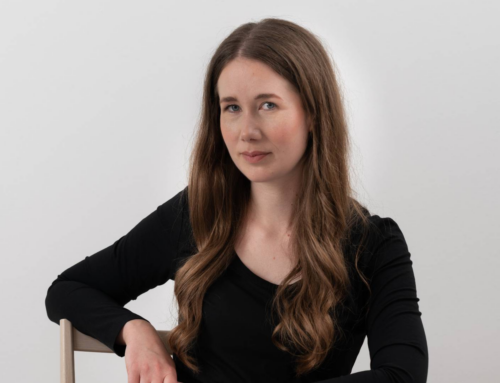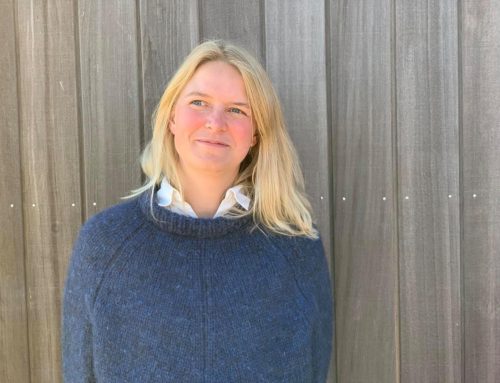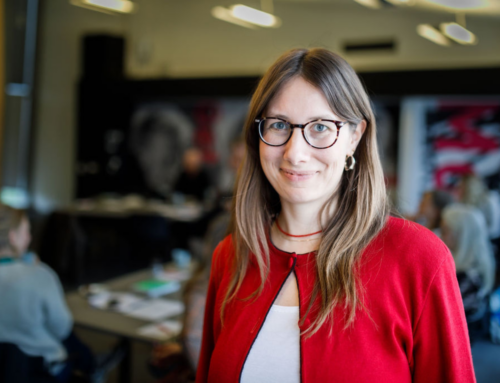
Design Solutions Must be Created for Humans as Sentient Beings
Light affects people, but a new PhD project indicates that the effect occurs not only through the eyes, but also through the skin. If we look at humans as sentient beings, we get a much wider range of opportunities and tools to apply in our work to create inclusive design solutions, says the researcher behind the project.
by Nanna Stærmose. The article is published on 19/04/2022.
Some light can be relaxing, while others can be invigorating. Light has a great impact on people and we can benefit from incorporating it into our design solutions. That is one of the conclusions in Stine Louring Nielsen’s PhD project. As an anthropologist, she has dealt with people, space, and health in the research fields of healing architecture and evidence-based design for several years. In her PhD project, she dives into the significance of light and studies how we as humans, sense and are affected by coloured lighting in the way we experience and move within a room.
Her project consists of a series of case studies of both lived environments and laboratories, where she studied people in blue, white, amber, and red hues of lighting. As part of the research, she blindfolded some of the subjects to see how they would respond to the light when they were unable to capture it through their eyes.
“What was interesting was that there was no significant difference in people’s reactions in relation to whether their eyes were open or blindfolded. They simply moved in comparable ways and had comparable experiences across states of vision. This indicates that we are actually able to sense and thereby be affected by light through the skin and not just through the eyes,” says Stine Louring Nielsen.
Stine Louring Nielsen conducted several studies in connection with her PhD dissertation, including a neuroscientific study, where she found that the area of the brain that normally registers sensory impressions, such as touch and temperature, was also activated when she exposed the subjects to light while they were blindfolded.
With another laboratory experiment she was also able to detect significantly comparable reactions according to the lighting she exposed people to. A blue light, for example, gave participants a predominant feeling of weightlessness and that the room grew large. An amber tone predominantly gave participants energy and a feeling of blossoming, while a reddish tone gave a feeling of grounding and being in a cocoon.
“It shows that it makes sense to work with light when we design spaces for people and their experiences and behaviour, and that we can benefit from challenging some of the lighting standards that exist today, which primarily address humans as visually sensing beings,” she says.
Humans as sentient beings
Stine Louring Nielsen’s voice lights up in excitement when she talks about her research. She thinks it is important that we begin to perceive human beings not only as physical bodies, but also as sentient and emotional beings. Doing so would give us much broader options to create inclusive designs, she believes.
“When we expand our understanding of human beings to include sensory and emotional aspects, we get more opportunities to create universal design solutions that embrace broadly and meet human beings as a whole,” she says.
And when we create design solutions that speak to all of our senses, we give people an opportunity to inhabit spaces and be present with their whole being.
“We sense and feel with our whole body, and, based on this, we interact not only with the physical environment around us, but also each other. In this regard, we are always affected by the atmosphere that a room sets and the moods that we as humans bring. This sensory effect of interaction points to how we are able to support certain types of experiences and behaviour in a room with a certain design, but also that, in the end, people themselves will always define how these are,” she says.
Having said that, the researcher also acknowledges that creating an inclusive design solution is not always easy when it comes to working with light. Some people are very sensitive to light and may be overwhelmed by coloured or bright light, while others do not consciously notice it. But maybe there is still a way, says Stine Louring Nielsen.
“So far, I have only researched the effects of three very saturated colours on a selection of people, so there is a need for further research and adjustments of the light in relation to finding design solutions that meet the majority of people while at the same time benefitting sensitive individuals,” she says.
Read more about Stine’s research:
Nielsen, Stine Louring, Ute Christa Besenecker, Nanna Hasle Bak, and Ellen Kathrine Hansen. 2021. “Beyond Vision: Moving and Feeling in Colour Illuminated Space.” Nordic Journal of Architectural Research, Vol. 33, Issue 2. – The article is available here: https://vbn.aau.dk/da/publications/beyond-vision-moving-and-feeling-in-colour-illuminated-space
Wulff-Abramsson, Andreas, Mads Deibjerg Lind, Stine Louring Nielsen et al. 2019. “Experiencing the Light Through Our Skin – An EEG Study of Colored Light on Blindfolded Subjects.” Proceedings – 2019 IEEE 19th International Conference on Bioinformatics and Bioengineering, BIBE 2019, 609–16. – The article is available here: https://vbn.aau.dk/da/publications/experiencing-the-light-through-our-skin-an-eeg-study-of-colored-l
A complete list and links to all my publications and activities in connection with my PhD project are available here: https://vbn.aau.dk/da/projects/the-feel-of-light
Stine Louring Nielsen
Anthropologist, PhD student, Aalborg University Copenhagen
Researcher in people, space, and health
Has just submitted her PhD dissertation on how people sense and are affected by different shades of light
Read more research profiles




